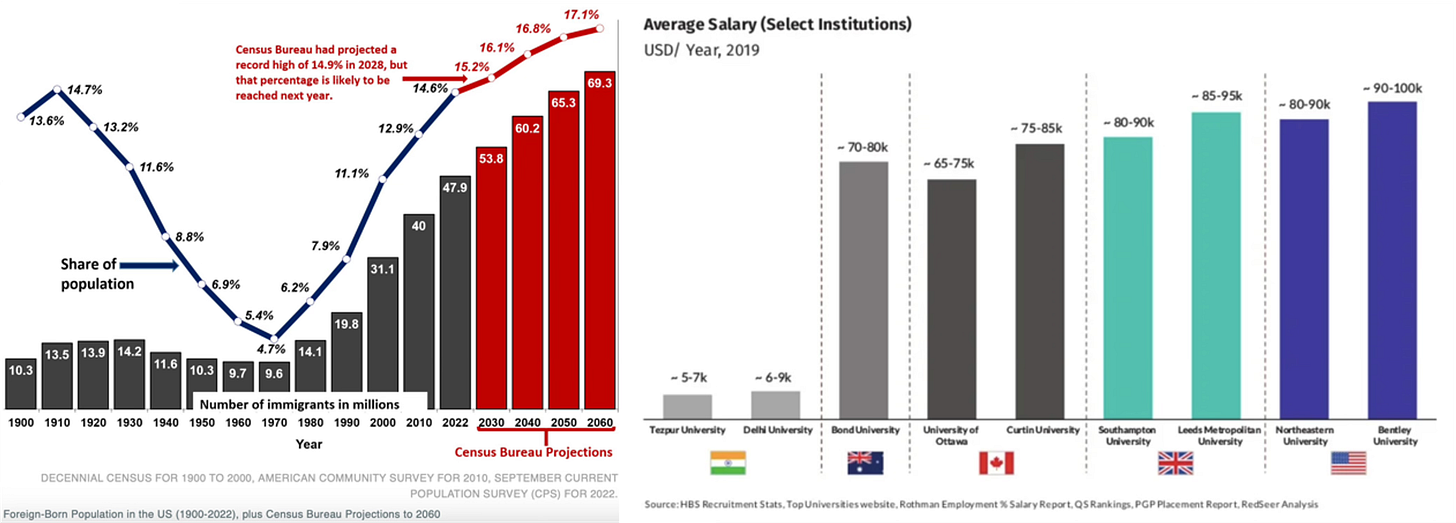The challenges of Indian economy – a review of things on which the budget was built
The Finance Minister tabled her 8th Budget on February 1, 2025. We capture aspects of the economy that were highlighted in the budget so that understanding the budget is lot more simpler and relevant.
On February 1, 2025, India’s Finance Minister Nirmala Sitharaman presented her 8th consecutive budget in the Lok Sabha. With geopolitical tensions looming larger by the day, India had somehow maintained its sweet spot until now. It is, however, important that India shines brighter to keep investors and businesses from turning heads away.
On the other hand, India is already facing plenty of issues within and most of these issues have the potential to derail it from its trajectory. The government has to actively roll out policies to fill the gaps in the weaknesses and double down on the strengths so that when the economy swells, it maintains a symmetric shape and at the same time does not turn into a bubble.
Below we have captured certain aspects of the economy so that understanding the basis on which the budget is built becomes simpler.
- Having about 50% of its population engaged in agricultural or allied activities, India clearly lags in productivity per hectare. India’s productivity of rice and wheat per hectare is less ~40%-50% of that of Netherlands.
- MSMEs employ over 7.50 crore (750 million) people, are responsible for 36% of India’s manufacturing and 46% of India’s exports. Yet, ease of doing business is something MSMEs keep struggling at. Navigating through constant and sudden changes in taxation, directives, policies, limits by the government suck out energy from the entrepreneurs trying to make a living or trying to make big.
Source: PIB, GOI
- Access to credit is another big challenge for the MSMEs. Over 90% of the MSMEs fall under the category of Micro enterprises. Due to their unproven records, these entrepreneurs are subjected to higher interest rates directly affecting their profitability or are restricted from availing credit altogether.
- India boasts having the biggest and fastest growing market in the world and yet, it stands at the crossroads that could either make it the most attractive destination sooner than expected or one of the biggest missed opportunity of the century. Having more mouths to feed doesn’t make a market, having ample of efficient brains, hands and legs that facilitate feeding those mouths do. If the population is not well equipped with adequate education, skilling and vocation, it becomes a liability. And while an unskilled population is always higher in numbers, the conversation always turns towards ‘lack of employment opportunities’ whereas the real conversation that should take place is of ‘employability’.
- For the longest time India is known as the back-office of the world. The threat of AI replacing several jobs like customer service, content writing and creation, accounting, coding and so on puts the government in dilemma of adopting and promoting the new age technology versus leaving a big chunk of workforce unemployed. With this, even while we witness the businesses and economy growing, we might not see the employment opportunities following the trend.
- Brain drain was a concept taught to us in school, and we were also taught on the ways to mitigate the problem of brain drain so that the brightest of the minds stay in the country and take it forward. Lack of opportunities, inadequate compensation and issues with infrastructure are the prime reasons of the youth looking outwards for greener pastures.
- Balance of trade is something that India has always struggled with. Year after year, we have seen imports increasing faster than exports. As per the Press Information Bureau (PIB) of Government of India, Exports from April to November 2024 increased at 7.61% to USD 536 Billion vs the Imports that grew at 9.55% at USD 619 Billion. Constantly growing imports is detrimental to the economy as it empties our FOREX kitty, and the Central Bank is forced to purchase Foreign Currency to maintain the balance of payments (that eventually helps in maintaining the currency exchange rate).
Source: PIB, GOI
This article was specifically meant to introduce some trends of the Indian economy to you so that my next piece explaining the budget gets a lot more simpler and relevant for you.
Until then…








